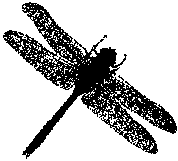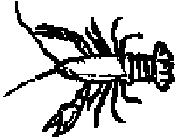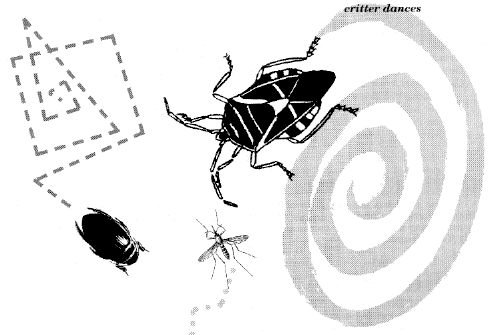The students visit a site on a northshore river. At the site they take a hike through the woods during which the students participate in an activity which helps them identify the trees. They learn about the ecology and topography of the area, observing land contours and the consequences of disposing of waste in a riverine ecosystem. The hike ends at a sandy beach on the river. Here the students learn the technique of "Critter Catchin'" or macroinvertebrate sampling, a technique used to obtain a water quality profile of the river. The students will gain a snapshot of the quality of this site by learning which invertebrate organisms are more sensitive than others to pollution. If they find organisms that can only tolerate clean water conditions, then the river is relatively unpolluted. If they find only pollution- tolerant organisms; then the water is polluted. In the process of this activity the students will have fun sharpening their observation skills by learning how to identify certain "critters," using easy- to-spot characteristics such as "dances"!
River Activities
| Leaf Bingo Game: |
At the beginning of the hike, students are told to collect one of each different kind of leaf they see (preferably from the ground beneath the tree). At the end of the trail, the students can play "Leaf Bingo," using a bingo card marked out for the leaves commonly found on the trail. For this activity:
- Print out the bingo card
- Make a copy for each student;
- Students play the game by placing one of their leaves on each leaf drawing that matches. If they make a complete row horizontally, diagonally, or vertically, they score a "bingo."
- Have the students "key out" their leaves using a guide to Louisiana trees.
| Mapping/Planning: |
Photocopy topographic maps of the river and its surroundings and distribute before the field trip.
Looking at the maps the students can:
- Find the lowest and the highest elevation points using the contour lines;
- Locate the site, the woods, and the river;
- Predict possible sources of pollution from land adjoining the river;
- Predict some land use changes that could take place in the near future that would have a negative impact on the stretch of the river they visited;
- Brainstorm ways to avoid problems that are occurring lower on the river.
| Role Playing: |
Present the students with a dilemma:
A land developer has applied for a permit to clear 80 acres of land adjoining the River. He plans to sell the timber and subdivide the area into parcels of land for single family homes, each on several acres.
- Students divide into teams to assess the possible impacts of the land development on the wildlife, the water quality of the river, the benefits to the local economy, or other factors. They should also discuss the measures that could be taken to reduce the potential impacts.
- Each team selects a role from which to debate issues and arrive at a decision about whether or not the permit should be given. Roles could include: a biologist, a water chemist, an environmental activist, a member of the parish council, a member of the parish planning commission, a potential homeowner, the developer, and others. Hats and other props help the students assume roles.
- Each group selects a spokesperson representing the "role" to sit on a panel.
- Each panel member has 3-5 minutes to state his/her case.
- The group members ask questions and raise issues for the panel to address.
- The whole class votes on whether or not to allow the development, based on the evidence/testimony of the panel.
| Macroinvertebrate Study: |

Before the river trip the students can get a "head start" by researching the sources of pollution, especially in St. Tammany Parish. On the field trip the students will make and record observations of the stream site, identifying the three aquatic habitat types from which they will sample. In cooperative groups consisting of roles such as net handlers, critter pickers, critter identifiers, and critter recorders, the students collect, identify and classify the invertebrates in the stream. After identifying and recording the critters caught, the students use the "Critter Count" chart to assess the health of the stream.
Although students learn that it is best to return the living things they find to their habitat, they may take some "critters" back to the classroom, keeping them alive in an aquarium with an aeration and filter system. The students can then continue to observe the organisms and participate in the following activities:
| Critter Drawing: |
Some students may wish to observe the organisms carefully and accurately draw them; others may prefer to create caricaturelike drawings. Students who excel in cartooning may want to draw comic strips of life in the river from the point of view of a caddis fly or dragonfly nymph.
| Critter Poetry: |
Students can create simple acrostic poems about their favorite critters. An acrostic poem is a form of nonrhyming poetry in which the first letters of each line spell a vertical word, phrase or sentence.
Directions to Students:
- Write your word or phrase vertically.
- Use the first letter in the word or phrase as the first letter in your first line.
- Use as many words as you like in a line.
Example:

Crunchy exoskeleton
Really red
Always tasty inside
Water-loving
Feasted upon
In the mud
Suck da heads?
How delicious!
| Critter Dances: |
Some of the critters have distinctive movements that can be used to identify them. The students will enjoy mimicking these and making up critter dances.

| Critter Songs: |
Make up signature songs about each type of critter to the tune of:
"I'm A Little Teapot"
Example:
I'm a little caddis fly in my home;[an error occurred while processing this directive]
Here's my head, just peeking out.
If you want to see me, look real close
Because I like to hide in my house!